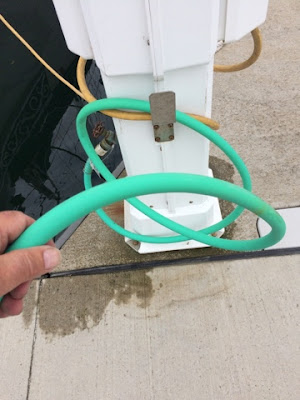I LOVE the new version of the Navionics app especially the new presentation of your collection of "favorites" areas. You get just about everything you could use or need in one integrated display. Look what is displayed..
- Current weather, including wind speed and direction
- Sunrise, sunset, moonrise, moon set, moon phase
- Projected weather
- Tide (nearby station)
- Current (nearby station)
Everything you need in a single integrated display. The Navionics user interface designers must have had some interesting discussions on how to get all this into a single screen.
There is a minor problem with the current version, however. I have been working with Navionics on getting a minor nag corrected:
In this display, you can see three different representations of the state of the tide:
- In the upper part of the image, inside a blue circle, an "emptying glass" icon showing that the tide is at 5.8 feet and falling,
- in the "Details section, a graph showing the tide curve and where we are on it, and
- in the "Details" section, another "emptying glass" icon showing that we are at 5.8 feet... AND RISING
That's right... The icon in the Details section has the arrow indicating the wrong direction. This error only occurs for a little while around slack (high & low), but still, it is wrong.
I bring this up only to emphasize that the Navionics personnel are very, VERY responsive to customer input, and they are actively working on this (pretty trivial) issue; it will probably be fixed by the time you read this. I appreciate that they are continually fine tuning and improving their software. And I have talked before about their involvement with community-oriented crowd-sourcing of depth information before. These are good folks, people!
I love these folks, and I love this app! If you don't have it, how could turn down a replacement for a chartplotter that sells for as little as this? Answer: you can't.
Get it.
Get it.




























